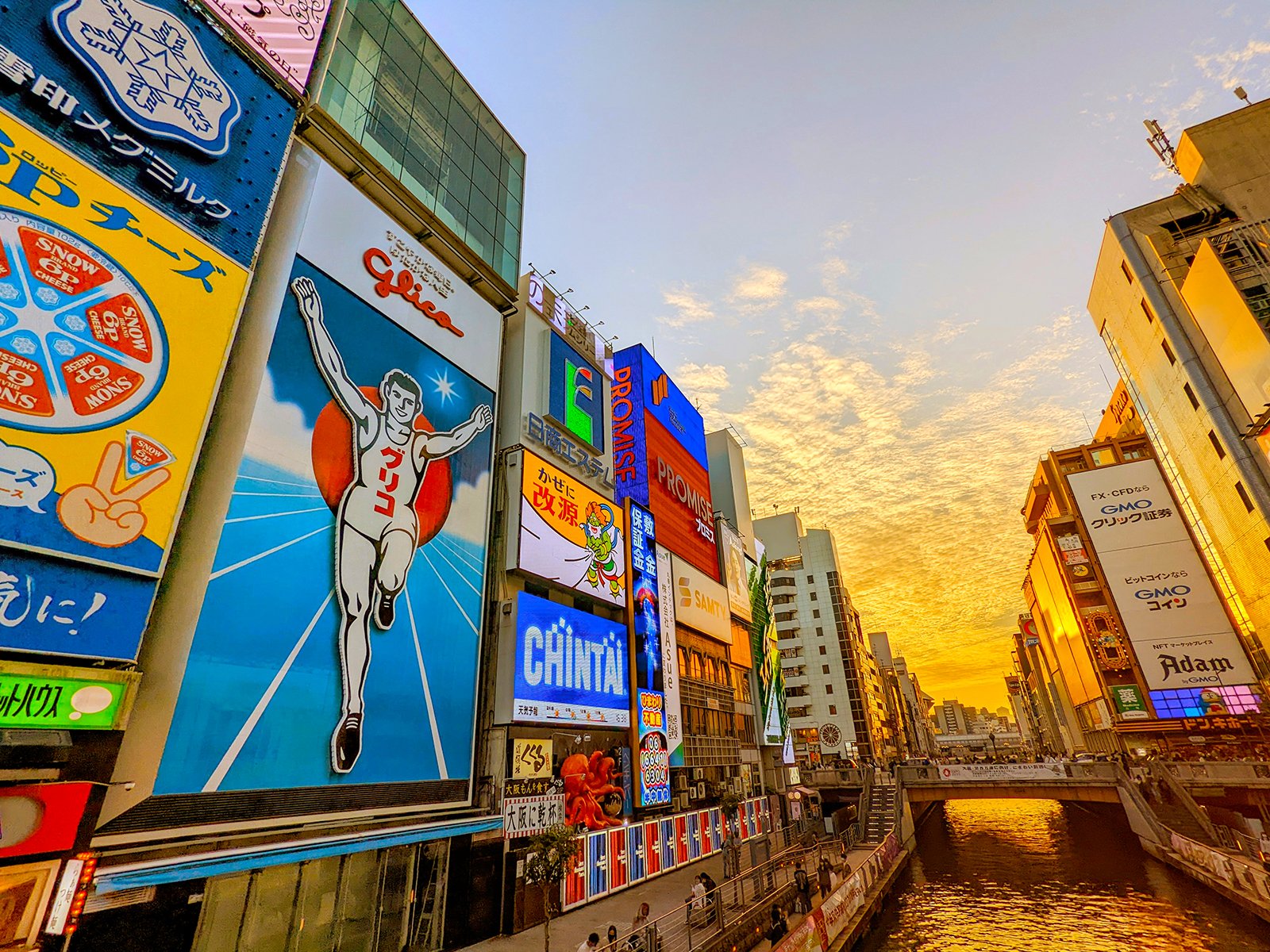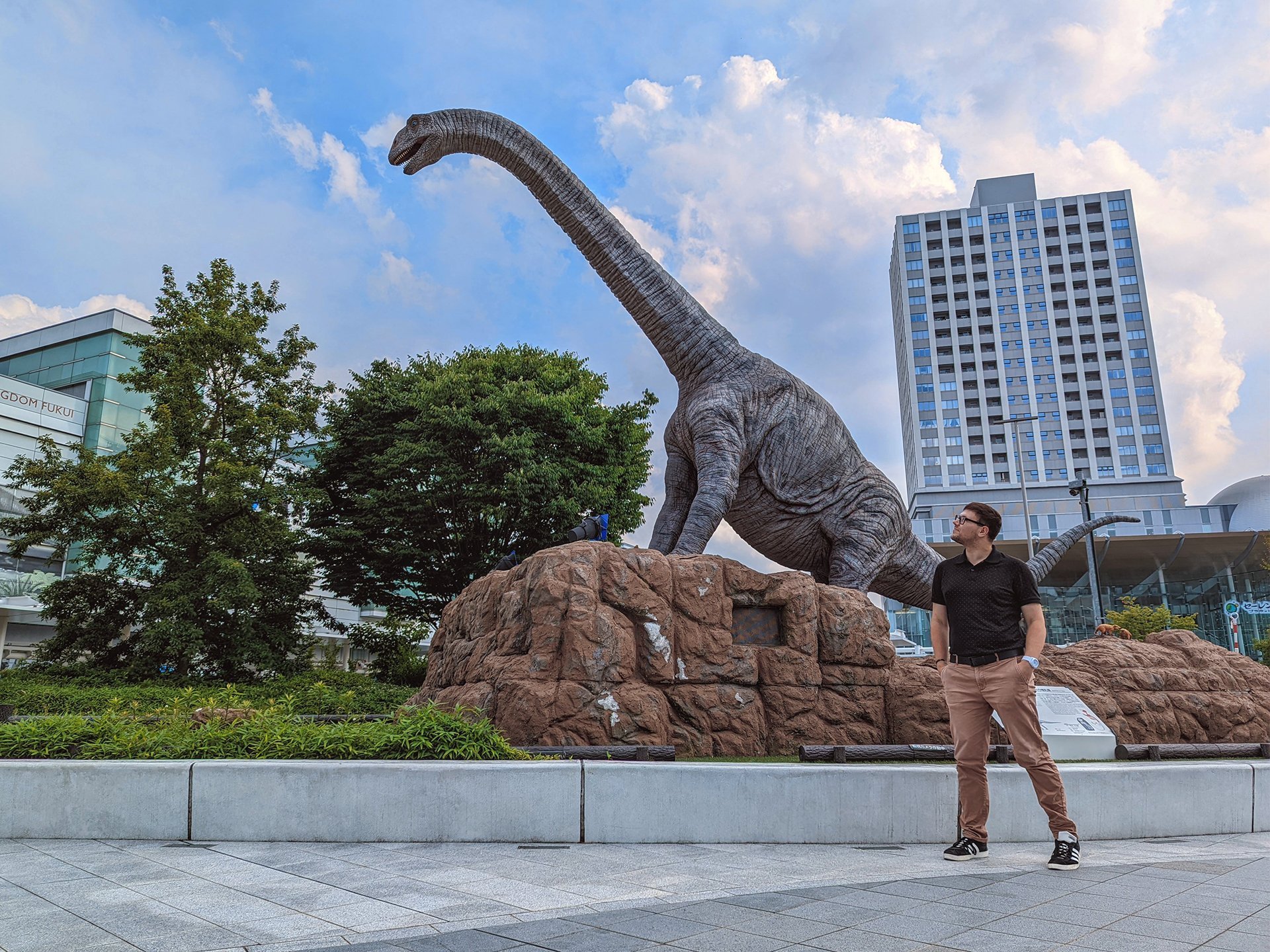Japan's Kentucky Christmas Tradition

Store manager Takeshi “Shin” Okawara is credited with inventing the Japanese tradition nearly 50 years ago.
A statue of Colonel Harland Sanders dressed as Santa Claus at a KFC restaurant, Fukui City, Fukui Prefecture, Japan (2021). Photo by DannyWithLove.
Christmas is not a public holiday in Japan — just one percent of the Japanese population identifies as Christian — and yet on Christmas, an estimated 3.6 million families across the nation will gather for a special Yuletide meal of which the centerpiece is none other than Kentucky Fried Chicken.
Japan is the third largest market for KFC, after China and the United States. Sales increase tenfold in December, which accounts for a third of KFC Japan’s annual revenue. In 2019, the company’s Christmas sales alone reached a record 7.1 billion yen (approximately $62.5 million).
This Christmas tradition traces back to a half-century ago, to Takeshi “Shin” Okawara, the store manager of Japan’s first-ever permanent KFC store in Nagoya, which opened on July 4th (U.S. Independence Day) after a successful trial run at the 1970 world fair in Osaka.
Okawara had previously been working for a printing and paper company. He had studied in the United States, earning a degree in Advanced Management from Harvard Business School. At just 27 years old, he approached Loy Weston, the chairman of KFC Japan, about a packaging deal. Impressed by the young man’s initiative, Weston convinced Okawara to join KFC.
According to Okawara, he was destitute, sleeping on flour bags in the back of the store. Desperate to lift sales, the enterprising manager conceived of the slogan “Kurisumasu ni wa Kentakkii!” (“Kentucky for Christmas!”). Okawara dreamed of a “party barrel” full of fried chicken for families to enjoy together.
In 1974, “Kentucky for Christmas!” was developed into a national marketing campaign featuring ads, commercials, and celebrities. It was a runaway success, turning into a veritable chicken frenzy. By 1976, Colonel Sanders was ranked the 2nd most recognizable celebrity in the world in an independent survey, following fellow Kentuckian Muhammad Ali.
Described as a “tiger” by Weston, Okawara would become president and CEO of KFC Japan in 1984, leading the company until 2002.
In an interview with the NHK (Nippon Hōsō Kyōkai), Japan’s only public media broadcaster, Okawara went so far as to claim that eating fried chicken for Christmas was an American tradition. “It was [a] lie,” Okawara explains. “I still regret that.”
Nevertheless, “Kentucky for Christmas!” arrived at the perfect moment, amid a post-war economic boom, growing interest in American culture, and a special day lacking national traditions. “It filled a void,” notes Joonas Rokka, an associate professor of marketing at the Emlyon Business School in France.
After World War II, “people had the cash to indulge in consumer culture for the first time,” explains Ted Bester, professor of Social Anthropology at Harvard University. “Since the US was a cultural powerhouse at the time, there was huge interest in Western fashion, foods, trips overseas — Japan was really opening up.”
The 20th century was the dawn of fast food. KFC had been founded in 1952, by Colonel Harland Sanders. He was awarded the title of Colonel by the Governor of Kentucky in 1950 — the highest title of honor that can be bestowed by the state — for his popular Sanders Cafe, where he developed and perfected his signature fried chicken.
People across Japan spend hours waiting in line to receive their order, which can be placed as early as November. To encourage social distancing amid the COVID-19 pandemic, KFC customers must now choose a designated pick-up time.
Christmas options range from small dishes priced at 650 yen ($6), to larger packages varying priced at 3900 yen ($36). Entire chickens are available at 5900 yen ($54). Eager for a piece of the Christmas market, other Japanese chains have embraced their own chicken specials.
What better way to celebrate a secularized consumer holiday than with some American fast food?










